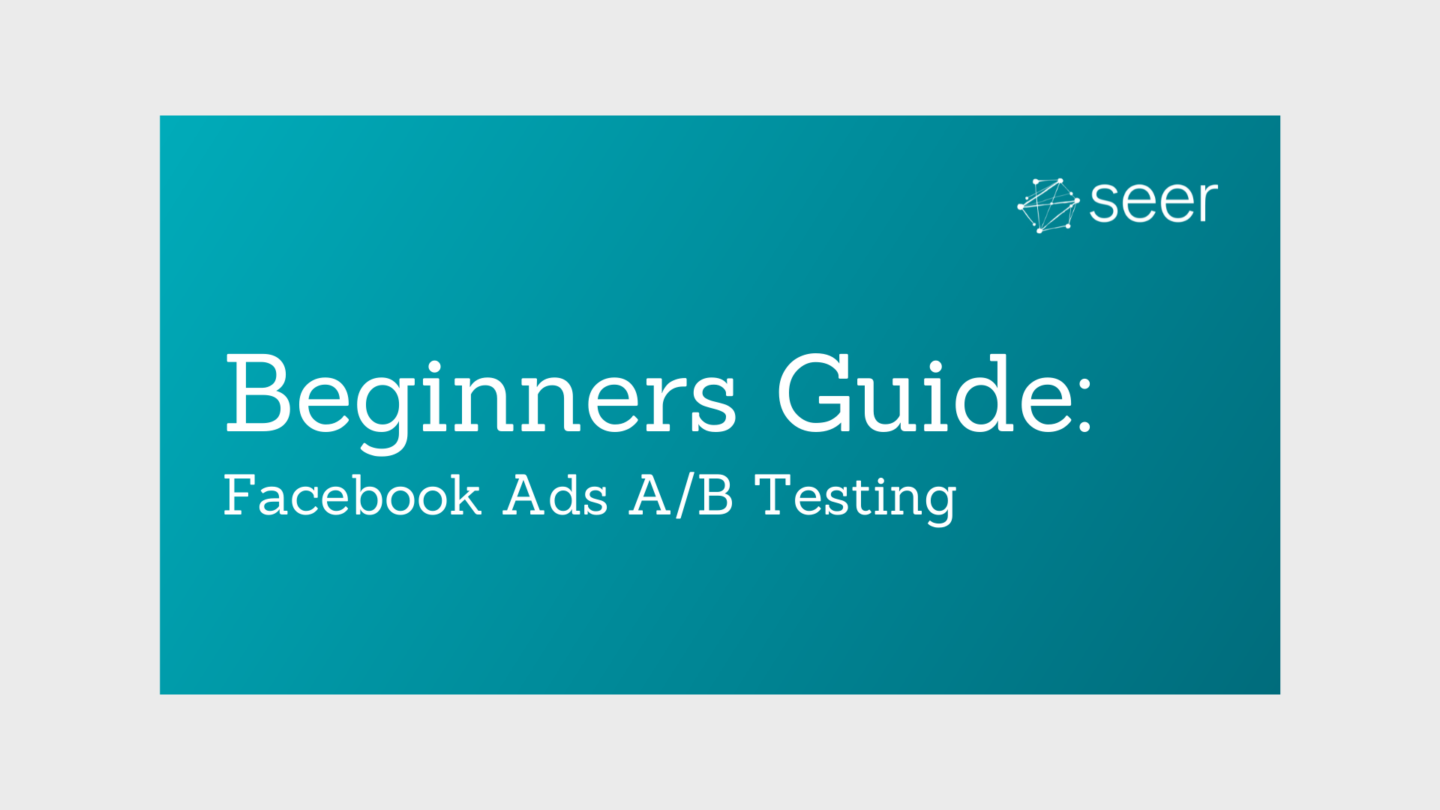13 Apr

Do you ever wish it was possible to just know the perfect combination of ad targeting, copy and creative that would help achieve your advertising goals?
While there isn’t a quick way to know right off the bat whether or not your Facebook Ads are set up as efficiently as possible — A/B testing can help you determine which ad variations are generating results and which aren’t.
💡 In This Guide:
If you’re newer to Facebook Ads, you may be wondering what A/B testing is.
Facebook A/B testing (or split testing) is the most statistically significant way of testing different campaign variables. For example, you can test based on ad sets and ad levels to determine which of these variables generate better results (whether it’s higher sales, more leads, an increase in website traffic, etc.)
The most common variables to split test on Facebook:
- Creative
- Ad copy
- Audiences
- Placements
- Call to action buttons
- Landing pages
While this isn’t a comprehensive list of the variables available to A/B test, keep in mind that what you DO test should be relevant to your overall business goals.
Having a question in mind will help you determine a variable to test.
Questions such as “Will creative that features people result in a higher CTR than creative that doesn’t?” or “How will targeting an audience aged 18-25 vs. an audience aged 26-44 impact my CPC?” are 1) tied to specific metrics and 2) clearly define which variable will be tested.
There are several ways to set up a split test on Facebook.
Step 1: Navigate to “Experiments” under “Analyze and report” in Facebook Ads Manager.
Step 2a: Either duplicate an existing Facebook campaign, ad set (shown here), or ad
Step 2b: Or Create a New Campaign
In Ads Manager: create “Campaign”, select “Objective”, scroll down from the campaign level and toggle on “Create A/B Test.”
Step 3: Get Started
After clicking “New A/B Test” or “A/B Test” (depending on where you start from), click “Get Started” in the lower right corner.
Step 4: Follow Facebook Prompts for Set Up
Follow the prompts based on the variable you want to test, and which campaign, ad set, or ad level you’re interested in testing that variable in.
Step 5: Rename the Ad Sets and/or Ads
Once you’ve selected your chosen variable and followed the steps to setting up your split test, we recommend changing the names of the ad sets and/or ads so that each version is immediately recognizable and distinguishable from the other.
In this example, we’re running a split test at the ad set level, as we were testing a saved audience against a lookalike audience to determine which would result in the lowest cost per click.
Step 6: View Results
After the test has finished running, you’ll be able to view your results:
While you set up your test, you were prompted to select the metric by which the winner would be determined.
In the event you want to view the split test results by a different metric, select the dropdown arrow next to “View By” to preview other options.
- Remember to only test one variable at a time!
- Testing multiple variables at once can result in unreliable data, as you’ll be unable to accurately determine which of your test variables ultimately drove the best results.
- Facebook recommends running tests with at least 80% estimated power.
- In other words, this is the likelihood of the test returning a statistically significant result based on your budget and number of days selected for the test. When setting up your test, Facebook will take these factors into account when generating the estimated power. Making adjustments to the testing time period and/or budget may increase or decrease this estimated power.
How Long Should You Test Facebook Ads?
Split tests on Facebook can be run for 1-30 days, but tests that run for less than 7 days may not yield conclusive results.
The ideal testing time frame isn’t a magic number, as it depends on your industry, objective, budget, audience size, and how long your audience typically takes to convert after seeing your ad.
However, if you’re new to split tests and don’t have an answer to each of these questions just yet, we recommend that you run your test for at least 7 days.
Why Should You Split Tests Ads on Facebook?
By now, you should have a basic understanding of what split tests are and why they’re important to run.
Of course, being able to determine “which ad or ad sets perform better” is part of the equation, but taking this a step further, you’ll better be able to:
- Identify and pause underperforming ads
- Gain a better understanding of your audience
- Save money and maximize your results by improving the consumer experience
While many of the more specific questions that you’ll be able to answer by running split tests go back to your business goals and what variables you’re testing, split tests can help you decrease cart abandonment, increase sales, lower your website’s bounce rate, generate higher conversion rates, and more.
Want to learn more about advertising on Facebook?
Sign up for our newsletter to get posts like this in your inbox:
Source: www.seerinteractive.com, originally published on 2022-04-12 16:30:11
Connect with B2 Web Studios
Get B2 news, tips and the latest trends on web, mobile and digital marketing
- Appleton/Green Bay (HQ): (920) 358-0305
- Las Vegas, NV (Satellite): (702) 659-7809
- Email Us: [email protected]

© Copyright 2002 – 2022 B2 Web Studios, a division of B2 Computing LLC. All rights reserved. All logos trademarks of their respective owners. Privacy Policy








![How to Successfully Use Social Media: A Small Business Guide for Beginners [Infographic]](https://b2webstudios.com/storage/2023/02/How-to-Successfully-Use-Social-Media-A-Small-Business-Guide-85x70.jpg)



![How to Successfully Use Social Media: A Small Business Guide for Beginners [Infographic]](https://b2webstudios.com/storage/2023/02/How-to-Successfully-Use-Social-Media-A-Small-Business-Guide-300x169.jpg)


Recent Comments